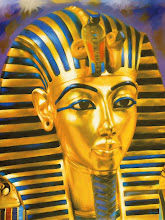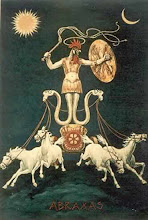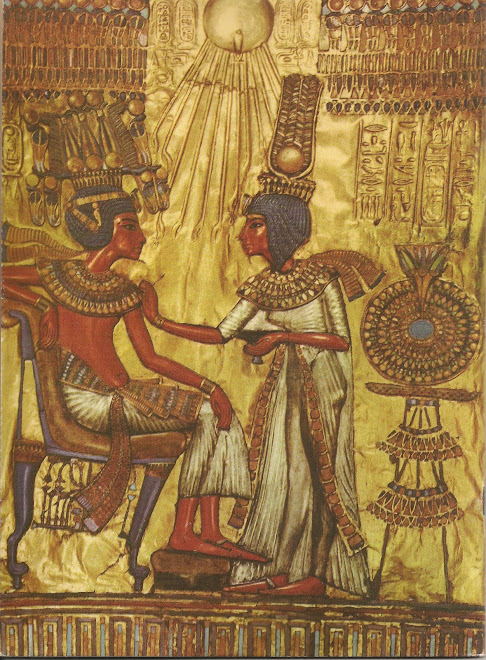terça-feira, 4 de outubro de 2011
The Digital Dead Sea Scrolls
The Dead Sea Scrolls are a collection of 972 texts from the Hebrew Bible and extra-biblical documents found between 1947 and 1956 on the northwest shore of the Dead Sea, from which they derive their name. They were specifically located at Khirbet Qumran in the British Mandate for Palestine, in what is now named the West Bank.
The texts are of great religious and historical significance, as they include the oldest known surviving copies of Biblical and extra-biblical documents and preserve evidence of great diversity in late Second Temple Judaism. They are written in Hebrew, Aramaic and Greek, mostly on parchment, but with some written on papyrus.[1] These manuscripts generally date between 150 BCE and 70 CE.[2] The scrolls are traditionally identified with the ancient Jewish sect called the Essenes, though some recent interpretations have challenged this association and argue that the scrolls were penned by priests in Jerusalem, Zadokites, or other unknown Jewish groups.[3][4]
The Dead Sea Scrolls are traditionally divided into three groups: "Biblical" manuscripts (copies of texts from the Hebrew Bible), which comprise roughly 40% of the identified scrolls; "Apocryphal" or "Pseudepigraphical" manuscripts (known documents from the Second Temple Period like Enoch, Jubilees, Tobit, Sirach, non-canonical psalms, etc., that were not ultimately canonized in the Hebrew Bible), which comprise roughly 30% of the identified scrolls; and "Sectarian" manuscripts (previously unknown documents that speak to the rules and beliefs of a particular group or groups within greater Judaism) like the Community Rule, War Scroll, Pesher on Habakkuk (Hebrew: פשר pesher = "Commentary"), and the Rule of the Blessing, which comprise roughly 30% of the identified scrolls.[5]
Digital copies
High-resolution images of all the Dead Sea scrolls are now available online here. They can also be purchased in inexpensive multi-volumes - on disc media or in book form - or viewed in certain college and university libraries.
According to Computer Weekly (16 November 2007), a team from King's College London is to advise the Israel Antiquities Authority, who are planning to digitize the scrolls. On 27 August 2008 the Israeli Internet news agency YNET announced that the project is under way.[53] The scrolls are planned to be made available to the public via Internet. The project is to include infrared scanning of the scrolls which is said to expose additional details not revealed under visible light.
The text of nearly all of the non-biblical scrolls has been recorded and tagged for morphology by Dr. Martin Abegg, Jr., the Ben Zion Wacholder Professor of Dead Sea Scroll Studies at Trinity Western University in Langley, BC, Canada. It is available on handheld devices through Olive Tree Bible Software - BibleReader, on Macs through Accordance, and on Windows through Logos Bible Software and BibleWorks.
On 19 October 2010, it was announced[54] that IAA would scan the documents using multi-spectral imaging technology developed by NASA to produce high-resolution images of the texts, and then, through a partnership with Google, make them available online free of charge, on a searchable database and complemented by translation and other scholarly tools. The first images, which according to the announcement could reveal new letters and words,[54] are expected to be posted online in the few months following the announcement, and the project is scheduled for completion within five years. According to IAA director Pnina Shor, "from the minute all of this will go online there will be no need to expose the scrolls anymore",[54] referring to the dark, climate-controlled storeroom where the manuscripts are kept when not on display.[54]
On September 25, 2011, the Digital Dead Sea Scrolls site went online. Google and the Israel Museum teamed up on this project,[55] allowing users to examine and explore these most ancient manuscripts from Second Temple times at a level of detail never before possible. Developed in partnership with Google, the new website gives users access to searchable, fast-loading, high-resolution images of the scrolls, as well as short explanatory videos and background information on the texts and their history. The Dead Sea Scrolls, which include the oldest known biblical manuscripts in existence, offer critical insight into Jewish society in the Land of Israel during the Second Temple Period, the time of the birth of Christianity and Rabbinic Judaism. Five complete scrolls from the Israel Museum have been digitized for the project at this stage and are now accessible online.
"We are privileged to house in the Israel Museum's Shrine of the Book the best preserved and most complete Dead Sea Scrolls ever discovered," said James S. Snyder, Anne and Jerome Fisher Director of the Israel Museum. "They are of paramount importance among the touchstones of monotheistic world heritage, and they represent unique highlights of our Museum's encyclopedic holdings. Now, through our partnership with Google, we are able to bring these treasures to the broadest possible public."
The five Dead Sea Scrolls that have been digitized thus far include the Great Isaiah Scroll, the Community Rule Scroll, the Commentary on Habakkuk Scroll, the Temple Scroll, and the War Scroll, with search queries on Google.com sending users directly to the online scrolls. All five scrolls can be magnified so that users may examine texts in exacting detail. Details invisible to the naked eye are made visible through ultra-high resolution digital photography by photographer Ardon Bar-Hama– at 1,200 mega pixels each, these images are almost two hundred times higher in resolution than those produced by a standard camera. Each picture utilized UV-protected flash tubes with an exposure of 1/4000th of a second to minimize damage to the fragile manuscripts. In addition, the Great Isaiah Scroll may be searched by column, chapter, and verse, and is accompanied by an English translation tool and by an option for users to submit translations of verses in their own languages.,[55]
"The Dead Sea Scrolls Project with the Israel Museum enriches and preserves an important part of world heritage by making it accessible to all on the internet," said Professor Yossi Matias, Managing Director of Google’s R&D Center in Israel. "Having been involved in similar projects in the past, including the Google Art Project, Yad Vashem Holocaust Collection, and the Prado Museum in Madrid, we have seen how people around the world can enhance their knowledge and understanding of key historical events by accessing documents and collections online. We hope one day to make all existing knowledge in historical archives and collections available to all, including putting additional Dead Sea Scroll documents online."
The Dead Sea Scrolls Digital Project is funded by George Blumenthal and the Center for Online Judaic Studies, which first envisioned the project in order to make these manuscripts widely accessible and to create an innovative resource for scholars and the public alike. Dr. Adolfo D. Roitman, Lizbeth and George Krupp Curator of the Dead Sea Scrolls and Head of the Shrine of the Book, and Dr. Susan Hazan, Curator of New Media and Head of the Museum's Internet Office, directed the project for the Israel Museum, working in collaboration with Eyal Fink, Technical Lead, and Eyal Miller, New Business Development Manager, at Google's R&D Center in Israel.
ExtractNetSource (and below images): http://en.wikipedia.org/wiki/Dead_Sea_Scrolls
Subscrever:
Enviar feedback (Atom)





.jpg)
.jpg)









+001.jpg)


+001.jpg)
+001.jpg)
+001.jpg)






+001.jpg)
+001.jpg)





+001.jpg)



+001.jpg)

+001.jpg)

+001.jpg)
+001.jpg)
.jpg)



Sem comentários:
Enviar um comentário
Nota: só um membro deste blogue pode publicar um comentário.